
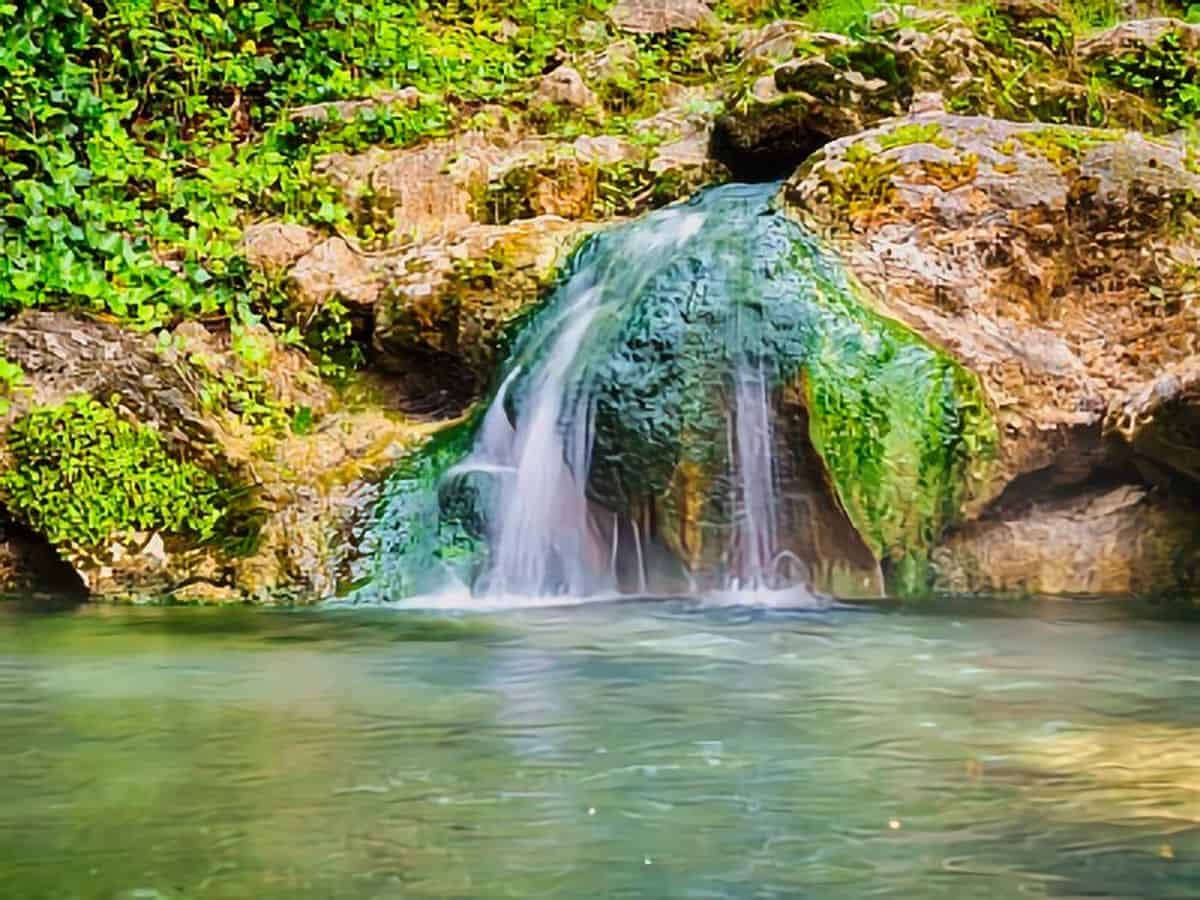
20 Hot Springs Boondocking Locations for Ultimate Outdoor Relaxation
If you’re hoping to blend the quiet freedom of boondocking with the comfort of hot springs, Arkansas is a fantastic place to start. Hot Springs National Park stands out, with several dispersed camping options close to soothing thermal waters. There are up to 20 boondocking locations around Arkansas hot springs, so you can settle into peaceful, natural surroundings—no crowded campgrounds or full amenities required.
You’ll find spots like Harris Brake Lake and forest service roads where you can park your rig and wander over to a nearby spring. Boondocking in these areas gets you away from the usual crowds and lets you really connect with the landscape, all while soaking in that classic Arkansas hot spring experience.
If you’re after a mix of adventure and relaxation, these sites are hard to beat. Set up your own camp and slip into the natural hot springs whenever you feel like it. The flexibility is part of the fun.
About This Location
You’ll come across plenty of boondocking spots near natural hot springs. Most offer free or budget-friendly camping with easy access to warm, relaxing water. Hot Springs National Park is a favorite, with camp areas like Catherine’s Landing—famous for its quiet setting close to the springs.
Other places, like Hot Well Dunes, mix sandy landscapes with geothermal pools for some unique camping experiences. You’ll find everything from developed campgrounds to wild, dispersed spots where you’re on your own. Some flat playa regions are out there too, but keep an eye on the weather.
History runs deep in a few hot spring areas, especially at Hot Springs National Park. The park’s healing waters and old bathhouses have drawn visitors for ages. Knowing a bit of background can make your visit feel more special.
Terrain varies a lot—forests, dunes, lakesides, you name it. Always check the latest rules on camping and water use to help protect these natural resources.
A few things to keep in mind:
- How close the hot springs are (walk-in or nearby parking)
- What facilities are there (or aren’t)—water, restrooms, etc.
- Environmental rules you’ll need to follow
- Safety stuff like water temps and wildlife
Plan ahead and you’ll be able to enjoy warm water and nature side by side.
Location And Access
Most hot springs boondocking sites sit on public land—national parks, BLM (Bureau of Land Management) areas, or out in the desert. These places typically allow dispersed camping, so you’re not limited to official campgrounds.
Take Hot Springs National Park, Arkansas, for example. You’ll find dispersed sites near Harris Brake Lake and in the Ouachita National Forest. Usually, you’ll need to drive on dirt or gravel roads, so a vehicle with decent clearance is a good idea.
In the desert and on BLM land, access can range from paved roads to rough, unmarked tracks. Local maps and rules are your friends—double-check them so you don’t end up stuck or lost.
Hot springs near highways or main roads are usually marked or have easy pull-offs. The more remote springs, especially those tucked into forests or deserts, might need a short hike or some careful navigation. GPS or offline maps can save you a headache.
Here’s a quick look:
| Location Type | Access Details | Notes |
|---|---|---|
| National Parks | Well-marked roads, some backcountry trails | Stick to park rules |
| BLM Land | Gravel/dirt roads, less maintained | Dispersed camping typically allowed |
| Desert Areas | Sometimes rough roads or hiking needed | Watch weather and water availability |
Figuring out your route and access ahead of time makes everything smoother.
Directions: How To Get There And What To Expect
Planning your trip to hot springs? Getting there can be half the adventure. Many are near highways, but some require a drive down bumpy, unpaved roads. A 4×4 or high-clearance vehicle is handy for remote campgrounds.
Some dispersed camping spots sit right off main roads, but you’ll often find yourself on dirt or gravel. After a rain or snow, those roads can get slick or muddy, so take it slow.
GPS and detailed maps help, but don’t count on cell service in the middle of nowhere. Bring paper maps or download offline navigation—just in case.
Sometimes you’ll need to drive around hills or mountains to get there. You might start on highways like I-84 or I-25, then turn off onto smaller back roads.
Don’t expect much in the way of amenities at dispersed sites. Usually, there’s no hookups or restrooms. Bring everything you’ll need—water, food, camping gear.
Here’s a quick guide for typical access:
| Location Type | Access Road | Vehicle Needed | Notes |
|---|---|---|---|
| Near California Hot Springs | Paved + dirt roads | Jeep/4×4 | Check current road conditions |
| Remote sites like 12 Mile | Dirt roads | High-clearance | Limited parking |
| Riverbend Hot Springs | Off I-25 | Standard car | Easy highway access |
If you’re unsure about road conditions or rules, call a local ranger station before you go.
Amenities And Activities
Picking a boondocking spot near Hot Springs? Amenities vary a lot. Many sites have fire pits and picnic tables so you can cook and hang out outside. Even without hookups, these basics make a huge difference.
Some campgrounds, like Hot Springs National Park KOA, offer RV parks with full hookups and modern comforts. If you’re after a more rustic vibe, dispersed camping areas keep things simple and quiet.
There’s plenty to do—hiking on marked trails through forests and hills, wildlife watching (bring your camera!), and fishing near lakes and streams.
Some campgrounds add a little extra fun, like zip lines or nearby outdoor adventures. State parks around Hot Springs sometimes have fully equipped cabins, so you can mix camping with comfort.
KOA campgrounds and private RV sites work well if you want to stay connected or need easy access to services. If you’d rather unplug, dispersed spots offer a true back-to-nature break.
Whatever you choose, bring your outdoor gear for cooking and exploring. The combo of natural beauty and practical amenities makes Hot Springs a solid pick for all kinds of campers.
Camping Regulations And Restrictions
Boondocking near hot springs? Always check local camping rules before setting up. Most spots are public land where dispersed camping is fine, but there are always limits.
Some areas let you camp for free, but only in designated places. Look for signs or markers—usually brown wooden signs with white text—showing where you can camp.
Common rules:
- No camping within 100 feet of water or trails
- Stay a few nights max (often 14 days or less)
- Pack out all trash and waste
- Use existing fire rings if fires are allowed
Some places require permits or registration, especially for longer stays or developed sites. Check with the Forest Service or National Park Service for the latest.
Don’t camp in restricted zones, on private land, or close to sensitive areas. These rules protect the land and wildlife.
If you’re camping for free, respect the land and other campers—follow Leave No Trace guidelines. Leave your spot just as you found it.
Regulations change with the season or location, so double-check before you go. Staying up-to-date keeps your trip legal and low-stress.
Leave No Trace
Camping at hot springs means you’ve got to look after the place. Leave No Trace is simple: leave it as clean—or cleaner—than you found it. That way, everyone gets to enjoy it.
Always pack out your trash. Food scraps, cans, plastic bits—don’t leave anything behind. Wildlife and future visitors will thank you.
Use fire rings if they’re there. If not, skip the fire. Scarring the land or risking a wildfire just isn’t worth it.
Stick to marked trails and camp spots. Don’t trample plants or drive over fragile ground. It takes ages for vegetation to recover.
Handle human waste carefully. Use restrooms if you can. Otherwise, dig a 6-8 inch hole at least 200 feet from water, and cover it up when you’re done.
Respect wildlife. Don’t feed animals or leave food out. Give them space—they’ll be happier, and so will you.
If you follow these basics, you’ll help keep hot springs wild and welcoming for everyone.
Information Resources
U.S. Forest Service
Arkansas State Parks
Leave No Trace Principles
National Park Service: Wildlife Safety
NPS
Territory Supply
Americas Parks
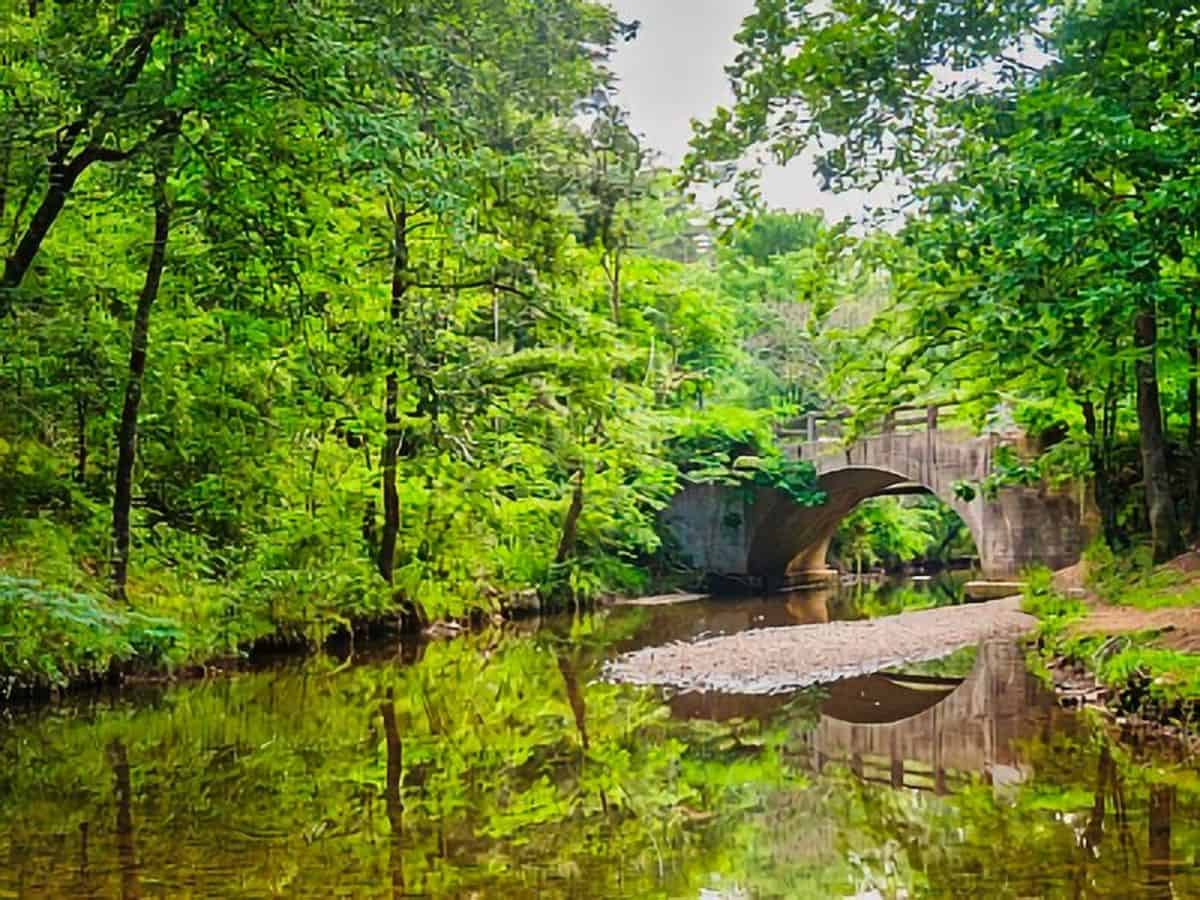
Hot Springs Free Boondocking Locations
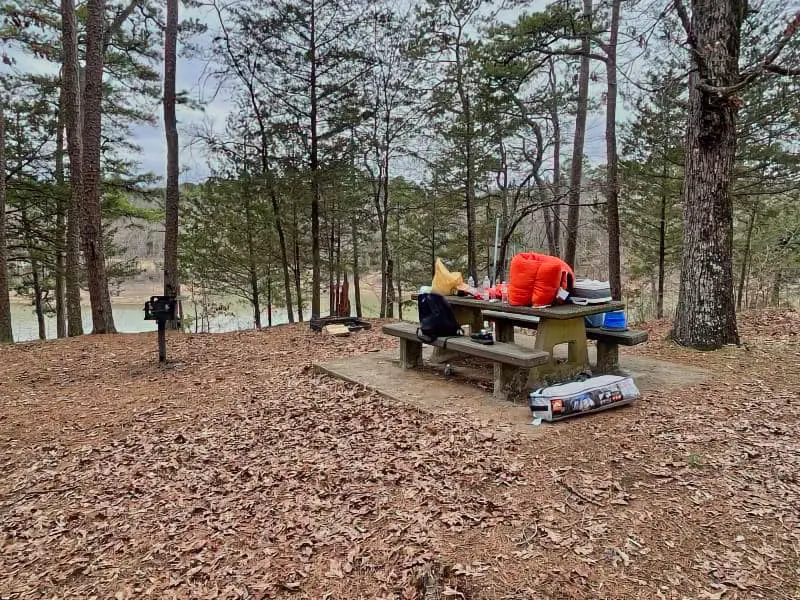
Washita Primitive Area Boondocking
34.649702, -93.531217
Located near Story, Arkansas, the Washita Primitive Camping Area offers a tranquil setting along the shores of Lake Ouachita. This free, first-come, first-served site is managed by the U.S. Army Corps of Engineers and provides a rustic camping experience. The area features several designated sites equipped with picnic tables and fire rings. While amenities are minimal, visitors appreciate the clean flush toilets and showers available on-site, offering a touch of comfort in an otherwise primitive setting.
The campground is known for its beautiful lake views and proximity to a swimming area, making it ideal for water enthusiasts. A boat ramp is also available for those looking to explore the lake. The surrounding area offers excellent hiking trails, kayaking, and canoeing opportunities. The peaceful atmosphere and natural beauty make it a great place to unwind and connect with nature.
Access to the campground is via a well-maintained gravel road suitable for most vehicles. However, larger RVs should exercise caution due to limited maneuvering space. Cell service is variable, so it’s advisable to plan accordingly. Visitors are encouraged to practice Leave No Trace principles to preserve the site’s natural beauty for future campers.

Pilot Boondocking
34.1866115, -93.070262
Pilot Boondocking refers to the practice of overnight parking at the Pilot Travel Center located just off Highway 67 near Caddo Valley, Arkansas. This is not a designated campsite or dispersed forest location but rather a commercial truck stop commonly used by RV travelers and van lifers needing a safe and legal place to rest. The lot is paved, well-lit, and typically busy with both commercial trucks and private vehicles.
Travelers can expect access to basic services such as fuel, restrooms, and sometimes a convenience store or fast food option on-site. However, there are no hookups, fire rings, picnic tables, or designated camping spots. As with all truck stop boondocking, parking is on a first-come, first-served basis and usually limited to one night unless otherwise permitted by staff.
If planning to stay here, it’s advisable to:
-
Park out of the way of commercial traffic.
-
Check in with the store staff out of courtesy.
-
Expect noise from idling trucks.
This location is best suited for overnight stops rather than extended camping. It’s a practical, safe spot for RVers traveling through the area who need to rest before continuing their journey.
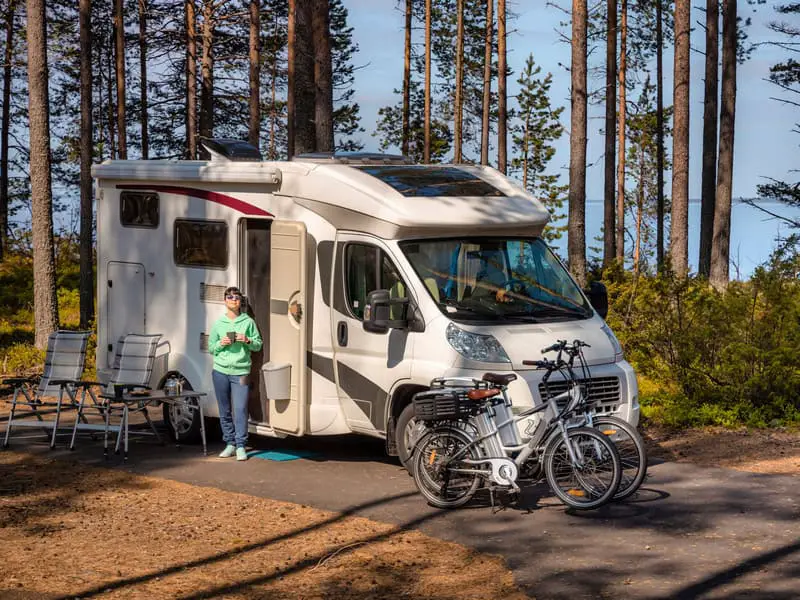
Irons Fork Boondocking
34.686321, -93.372695
Irons Fork Recreation Area is a primitive camping site located on the north end of Lake Ouachita in Jessieville, Arkansas. This free camping area is managed by the U.S. Army Corps of Engineers and offers a peaceful retreat for campers seeking a natural setting with basic amenities.
The campground features several flat spots suitable for camper vans and small RVs. Each site is equipped with picnic tables, fire rings, and grills. Pit toilets are available, and a boat ramp provides easy access to the lake. The calm waters of Lake Ouachita are perfect for kayaking, fishing, and swimming.
Access to Irons Fork is via a maintained gravel road, which can be slippery when wet and dusty when dry. The road is generally passable for most vehicles, but caution is advised during adverse weather conditions. The area is big-rig friendly, but larger RVs should verify road and site conditions before attempting access.
Cell service is variable, with some reports of limited AT&T and T-Mobile coverage. Campers should plan accordingly and be prepared for limited connectivity. The site is pet-friendly, and visitors are encouraged to practice Leave No Trace principles to preserve the area’s natural beauty.
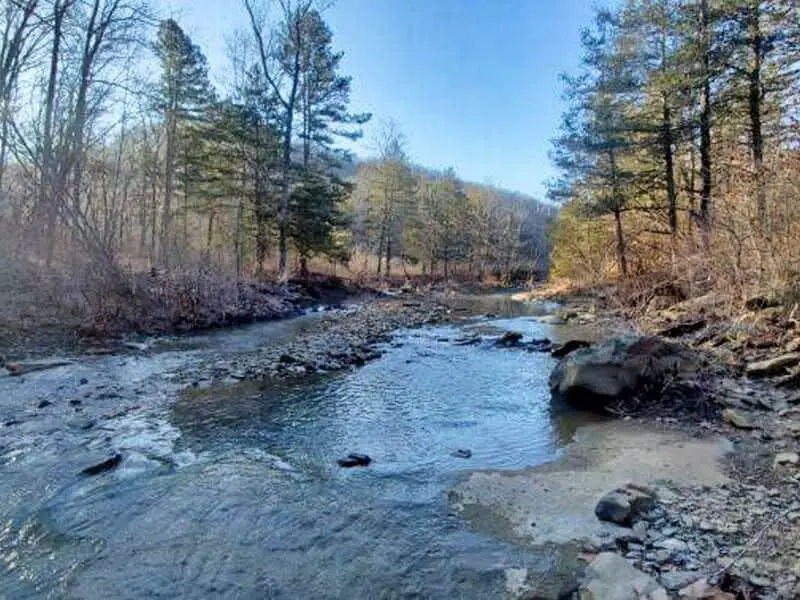
Ice Blue Swimming Hole Boondocking
34.75662, -93.4565
The Ice Blue Swimming Hole is a hidden gem located within the Ouachita National Forest in Arkansas. Known for its crystal-clear waters and serene surroundings, this spot offers a unique boondocking experience for campers seeking a refreshing retreat.
The area is characterized by its natural swimming hole, which is fed by a cool, spring-fed stream. The water’s striking blue hue and the surrounding rock formations create a picturesque setting perfect for relaxation and photography. The site is popular among locals for swimming and picnicking during the warmer months.
Camping here is primitive, with no developed facilities or designated campsites. Campers must be fully self-sufficient, bringing in all necessary supplies and packing out all waste. The site is best suited for tent campers and those with high-clearance vehicles, as access roads can be narrow and rugged.
Activities include swimming, sunbathing, and exploring the surrounding forest trails. Due to its remote location, cell service is likely to be unreliable. Visitors should inform someone of their plans and expected return time. As always, practicing Leave No Trace principles is essential to preserve the site’s natural beauty for future visitors.
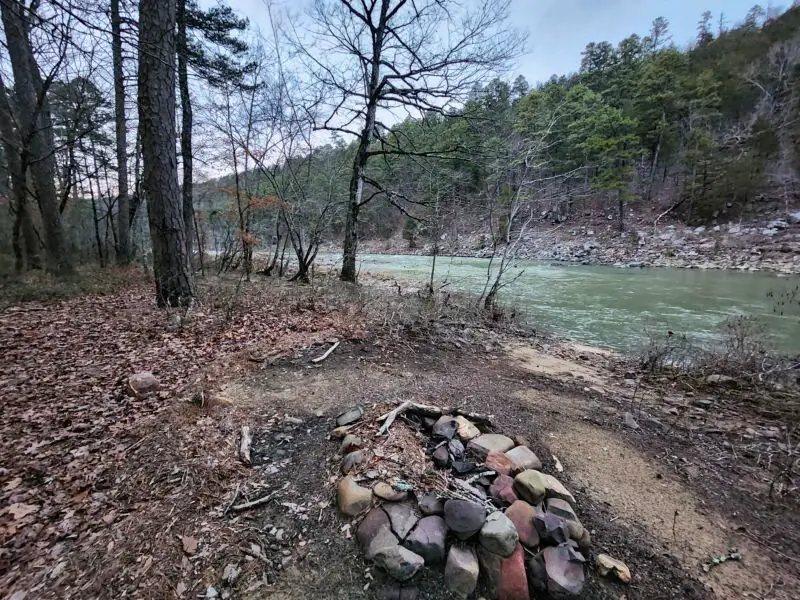
FR 849 Long Caney Riverside Boondocking
34.92353, -93.0517
FR 849 Long Caney Riverside Boondocking is a secluded camping area situated along the banks of the Ouachita River in Arkansas. This dispersed camping spot offers a tranquil setting for campers seeking solitude and a connection with nature.
The site features several informal campsites nestled among the trees, providing shade and a sense of privacy. The proximity to the river allows for activities such as fishing, kayaking, and swimming. The gentle sounds of the flowing water create a peaceful ambiance, ideal for relaxation and unwinding.
There are no developed facilities at this location, so campers must come fully self-contained. This includes bringing in all necessary supplies and packing out all waste. The area is best suited for tent campers and those with high-clearance vehicles, as the access road (Forest Road 849) can be narrow and uneven.
Cell service is likely to be limited or nonexistent, so campers should plan accordingly. The site’s remote nature makes it an excellent choice for those looking to disconnect and immerse themselves in the natural beauty of the Ouachita National Forest. Visitors are encouraged to practice Leave No Trace principles to maintain the area’s pristine condition.

Fourche Mountain RA Boondocking
34.895136, -93.392865
Fourche Mountain Recreation Area offers dispersed camping in a remote and elevated section of the Ouachita National Forest. Located just off Forest Road 74, this boondocking area sits near the Fourche Mountain Trailhead, a popular stop for equestrian users, ATV riders, and hikers alike. There are no formal camping pads, but there is ample space for tents, smaller RVs, and camper vans. The terrain is mostly gravel and dirt, with shaded spots tucked under tall pines and hardwoods.
Campers will find no developed amenities—no toilets, water, or electricity—so it’s necessary to come fully self-contained. This is a true off-grid setup, offering peace, privacy, and access to some of the Ouachita Mountains’ best trail systems. The nearby Fourche Mountain Trail connects with multiple forest service roads and other trail spurs, making it ideal for long hikes or rides.
The access road is generally in fair condition, but it can be rough or muddy during wet weather. Cell coverage is spotty to nonexistent. This site is best for campers looking to unplug entirely. Given its popularity with trail users, campers should be mindful of shared access areas and practice Leave No Trace principles.
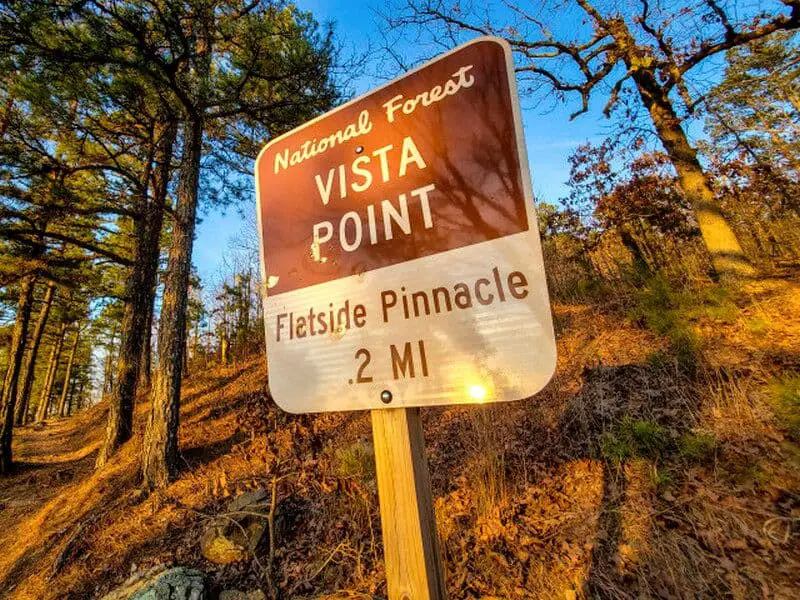
Flatside Pinnacle Boondocking
34.875383, -92.903849
Flatside Pinnacle Boondocking is located along Forest Road 94 in the Flatside Wilderness portion of the Ouachita National Forest. The area is known for its rugged beauty, forested ridgelines, and panoramic overlooks. Dispersed campsites can be found along the gravel access road, typically in pullouts or natural clearings with compacted dirt and gravel.
The area near Flatside Pinnacle Trailhead is especially popular, providing easy access to the short hike up to the summit of Flatside Pinnacle—a rocky outcrop offering sweeping views of the Ouachita Mountains. Campsites are primitive with no facilities, meaning no toilets, water, or trash removal. Campers should pack in all supplies and pack out everything, including waste.
The road is accessible to most high-clearance vehicles, though after rains it can become slick or rutted. The remote nature of the area means cell service is minimal or unavailable. This spot is best suited for campers looking to hike and enjoy scenic solitude. Noise is minimal, wildlife sightings are common, and the clear night skies are a draw for stargazers. As with all dispersed sites, please respect the land and adhere to Leave No Trace guidelines.

Buckville Boondocking
34°36’46.7″N 93°20’31.8″W
Buckville Boondocking is located near the northern shoreline of Lake Ouachita, accessible via Buckville Road (CR-59) and adjacent to the Buckville Use Area. While the formal Buckville campground requires fees and reservations, the surrounding forest lands offer dispersed camping opportunities without amenities. Boondockers often set up along nearby forest service roads or at informal clearings outside the developed area.
This area is a popular launch point for boating, fishing, and swimming on Lake Ouachita. A nearby boat ramp makes lake access easy for kayaks, canoes, or motorized watercraft. Most dispersed sites here are shaded and flat, suitable for tents and small rigs. Campers should be self-contained, as there are no hookups, potable water, or designated waste areas outside the pay sites.
Access roads are generally in good shape, though they may narrow and become less maintained further from the main entry. Cell service is variable; AT&T and Verizon users may find patchy signals. This is a peaceful option for boondockers who want proximity to the water without paying campground fees. As always, follow Leave No Trace ethics and avoid encroaching on any fee-based or signed-use zones.
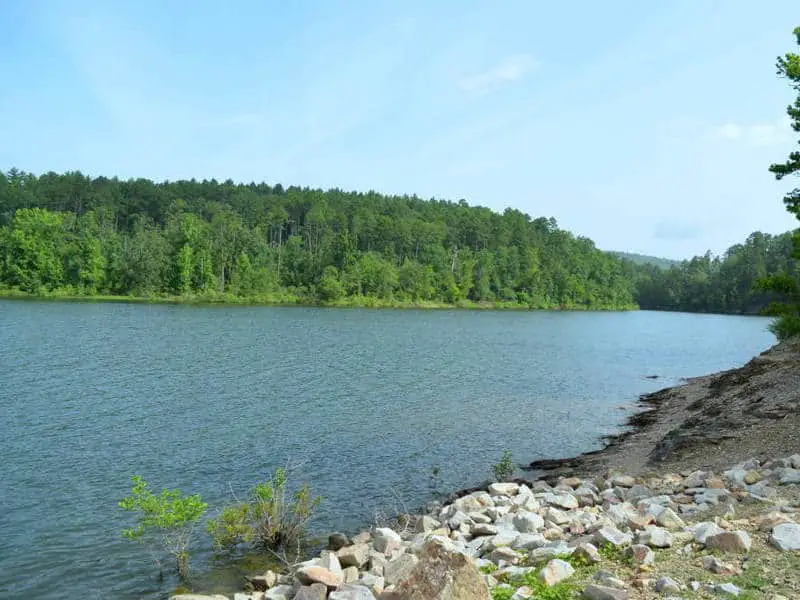
Big Fir Boondocking
34.605873, -93.413841
Big Fir Boondocking is situated near the Big Fir Campground in the Ouachita National Forest, southwest of Jessieville. While the established Big Fir Campground may charge fees, boondocking is allowed on adjacent forest lands and along Forest Road 48. These sites are typically primitive clearings or pullouts surrounded by tall pine stands and mixed hardwoods.
The area is quiet and wooded, popular with both campers and equestrians using nearby trails. Most sites are accessible via gravel roads and can accommodate tents or camper vans. Larger RVs may struggle with maneuverability depending on the exact pullout location. There are no restrooms, water, or trash services in the dispersed areas, so campers need to be fully prepared for self-sufficiency.
Trailheads such as Brushy Mountain and Irons Fork are within short driving distance, making this location convenient for outdoor recreation. Wildlife is frequently seen in the area, and the dense tree canopy offers relief from the sun. Cell coverage is weak or absent. Visitors should bring a map or GPS and be ready to navigate without digital support. All users should leave the site clean and undisturbed for future visitors.
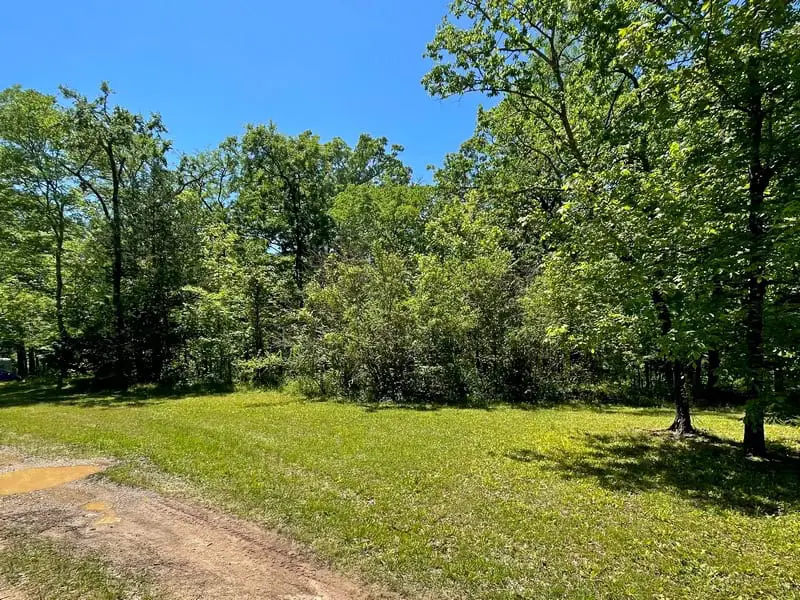
Avant Boondocking
34.636602, -93.383119
Avant Boondocking is located near the community of Avant, Arkansas, off Forest Service roads that branch from AR-298. This remote area of the Ouachita National Forest offers dispersed camping on flat, forested ground. It’s ideal for those who want a peaceful, backcountry experience with minimal human traffic.
The terrain consists of mixed pine and hardwood forest with several natural clearings large enough to accommodate tents or small trailers. There are no formal campsites, and amenities are nonexistent—no toilets, water, or trash services—so all campers must be self-sufficient and practice responsible waste management.
Access is via gravel roads that vary in quality. After heavy rain, these routes can become rutted or slick, so a vehicle with good ground clearance is recommended. The solitude of the area attracts wildlife like deer, wild turkey, and small mammals, making it a good destination for nature observation and photography.
There are no marked trails directly at the site, but the surrounding forest roads provide opportunities for hiking and exploration. Cell reception is typically unreliable, so campers should not depend on mobile service. Always inform someone of your plans and leave the site in the same or better condition than you found it.
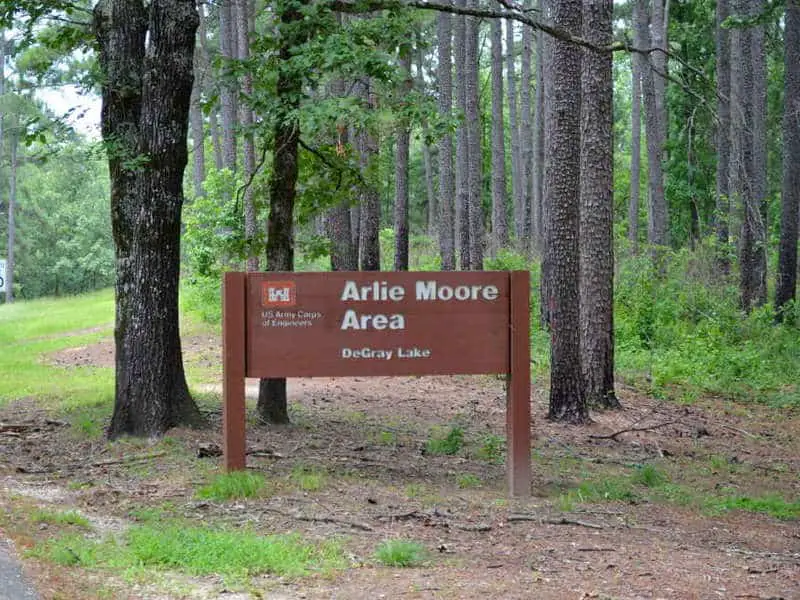
Arile Moore Boondocking
34.273588, -93.197044
Arile Moore Boondocking is situated within the Ouachita National Forest, just off Highway 84 and not far from the community of Bismarck. This dispersed camping area lies near the Arlie Moore Recreation Area, a developed section that provides lake access and amenities—but the boondocking areas lie outside the managed campground, along adjacent forest service roads. These pull-in areas offer primitive, fee-free camping options for self-contained visitors.
The terrain is wooded and relatively flat, with a mixture of pine and hardwood trees providing good coverage and shade. The dispersed sites are generally small, accommodating tents, truck campers, or small trailers. Large RVs may have difficulty navigating some of the narrower gravel roads. There are no facilities—no potable water, toilets, or waste services—so pack in all necessities and pack out all trash.
Nearby DeGray Lake is the main attraction. It offers boating, fishing, and swimming opportunities, and campers can easily drive to the main recreation area for access to boat ramps or day-use picnic spots. Cell signal is spotty but may be available in certain areas. This is a good off-grid option for those wanting lake access without campground fees. Respect the area by using existing clearings and following Leave No Trace practices.
Paid Campgrounds Hot Springs
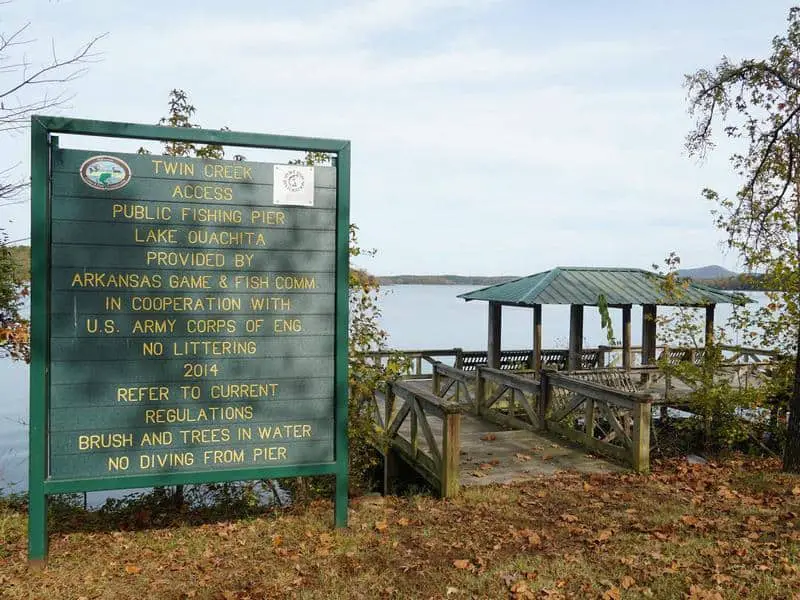
Twin Creek Campground
34.550313, -93.511047
Twin Creek Campground is located on the western side of Lake Ouachita, near Mount Ida in the Ouachita National Forest. Managed by the U.S. Army Corps of Engineers, this developed campground provides a more structured camping experience with amenities, but the surrounding forest area also allows for limited boondocking opportunities outside the fee zones.
Within the campground, there are designated sites suitable for tents and RVs. Most sites are paved or gravel and include picnic tables and fire rings. Vault toilets and drinking water are available, along with a boat ramp that provides direct access to the lake. The area is especially popular with anglers targeting bass and crappie in the clear waters of Lake Ouachita.
Outside the formal camping area, some forest service roads and pull-offs offer dispersed camping potential. These spots are primitive with no services and should only be used by campers who are fully self-contained. The forest canopy offers shade, and the proximity to the water makes it a relaxing option.
The roads leading in are gravel but manageable for most vehicles. Cell reception varies but is generally weak. Whether using the official campground or camping nearby in the forest, be sure to check posted signs and respect any use restrictions.
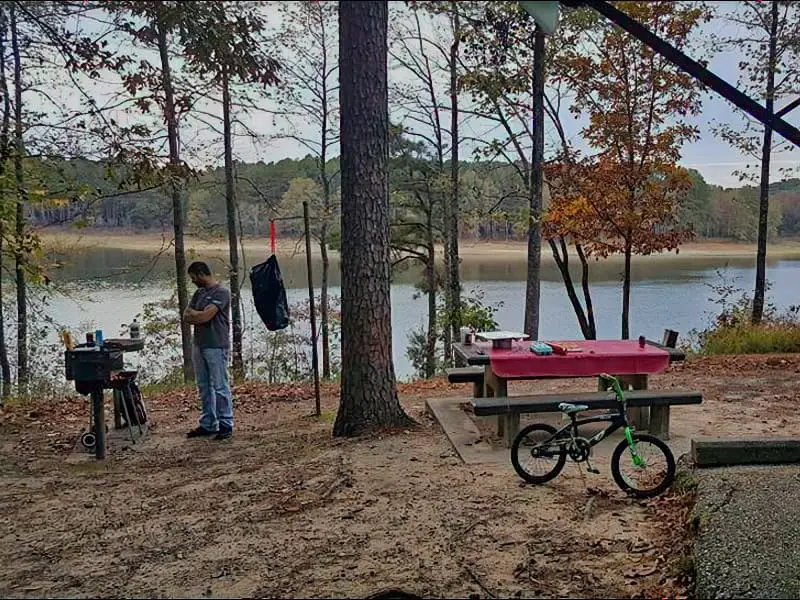
Shouse Ford Campground
34.289597, -93.26802
Shouse Ford Campground is a developed, fee-based campground managed by the U.S. Army Corps of Engineers on the southern shore of Lake DeGray. Located off Shouse Ford Road, it’s ideal for campers looking for access to water activities and basic facilities, though dispersed camping is not permitted within the managed area itself.
The campground includes gravel pads for both tents and RVs, with picnic tables, lantern posts, fire rings, and nearby vault toilets. Drinking water is available, and a concrete boat ramp provides easy access to the lake for fishing and boating. This is a popular location in the warmer months due to its direct access to DeGray Lake’s recreational waters.
For those looking for more primitive camping, forest service land to the west may offer limited boondocking spots along unmarked pull-outs, though these are not officially designated and require adherence to dispersed camping regulations. All boondocking should occur at least 100 feet from water sources and off main travel paths.
The area is wooded and generally quiet, especially outside of peak season. Cell coverage is inconsistent, and amenities are minimal outside the official campground. Visitors should arrive prepared and follow posted rules to protect the environment and ensure continued access.

Point Cedar RA Campground
34.28177, -93.289763
Point Cedar Recreation Area (RA) Campground is located near Point Cedar on the northeastern shore of DeGray Lake in Garland County. This is a lesser-known, more secluded area of the lake, managed by the U.S. Army Corps of Engineers. While it is a formal campground with designated sites, some visitors may find informal pull-outs or nearby forest service areas for boondocking outside the pay zone.
The main campground offers basic amenities including vault toilets, fire rings, picnic tables, and direct access to a boat launch. Campsites are typically gravel and shaded, accommodating both tents and RVs. Water access is nearby, but there are no electrical hookups or dump stations.
The area is surrounded by forested terrain with minimal development, making it a quiet and peaceful spot for those looking to enjoy fishing, paddling, or shoreline walking. Nearby forest service roads may provide primitive camping options, though users must ensure they are not within restricted or managed zones.
The road into the campground is gravel and generally passable with standard vehicles. Cell signal is spotty and cannot be relied upon. This location is best suited for quiet stays and low-impact recreation. Always practice Leave No Trace principles, especially if boondocking off-site.
Shouse Ford Campground is a developed, fee-based campground managed by the U.S. Army Corps of Engineers on the southern shore of Lake DeGray. Located off Shouse Ford Road, it’s ideal for campers looking for access to water activities and basic facilities, though dispersed camping is not permitted within the managed area itself.
The campground includes gravel pads for both tents and RVs, with picnic tables, lantern posts, fire rings, and nearby vault toilets. Drinking water is available, and a concrete boat ramp provides easy access to the lake for fishing and boating. This is a popular location in the warmer months due to its direct access to DeGray Lake’s recreational waters.
For those looking for more primitive camping, forest service land to the west may offer limited boondocking spots along unmarked pull-outs, though these are not officially designated and require adherence to dispersed camping regulations. All boondocking should occur at least 100 feet from water sources and off main travel paths.
The area is wooded and generally quiet, especially outside of peak season. Cell coverage is inconsistent, and amenities are minimal outside the official campground. Visitors should arrive prepared and follow posted rules to protect the environment and ensure continued access.
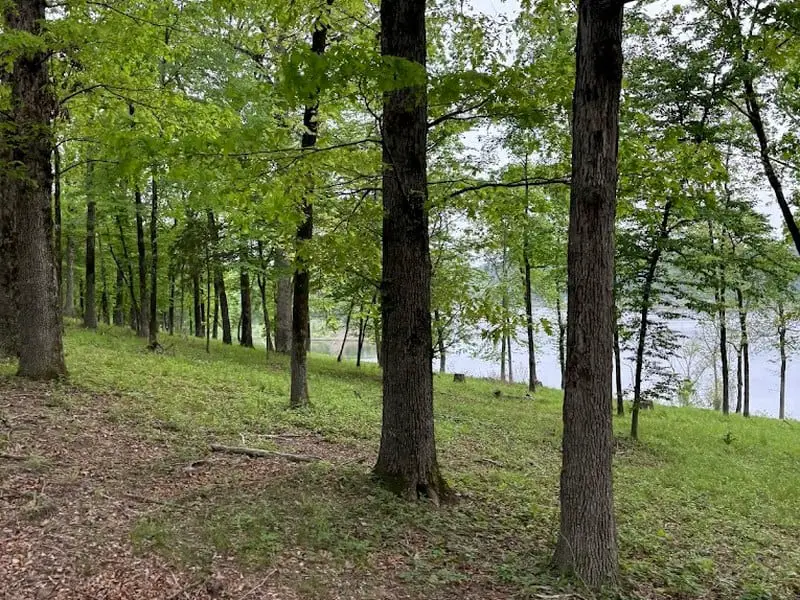
Little Fir Campground
34.633195, -93.472313
Little Fir Campground is situated along the northern shore of Lake Ouachita, near Mount Ida. This developed campground is operated by the U.S. Army Corps of Engineers and offers maintained campsites with basic amenities and direct lake access. It is popular among anglers and paddlers due to its proximity to quiet coves and open water.
The campground features gravel pads for tents and RVs, picnic tables, fire rings, and vault toilets. Drinking water is available seasonally, and there’s a boat ramp for launching small and mid-sized vessels. Most campsites are shaded by mature hardwoods and pines, offering some relief during summer months.
Though boondocking is not permitted within the managed site, forest service roads nearby (such as FS 47 or FS 401) may offer primitive, dispersed camping options for those looking to camp without fees or amenities. These forest roads often feature pull-off clearings where tents or small rigs can be set up, but they lack water, toilets, or trash services.
Road access to Little Fir is mostly gravel but well maintained. Cell reception is limited, so plan ahead for navigation. The site is peaceful and quiet—ideal for those seeking a no-frills lakeside stay. All campers, especially boondockers, should follow posted regulations and Leave No Trace guidelines.
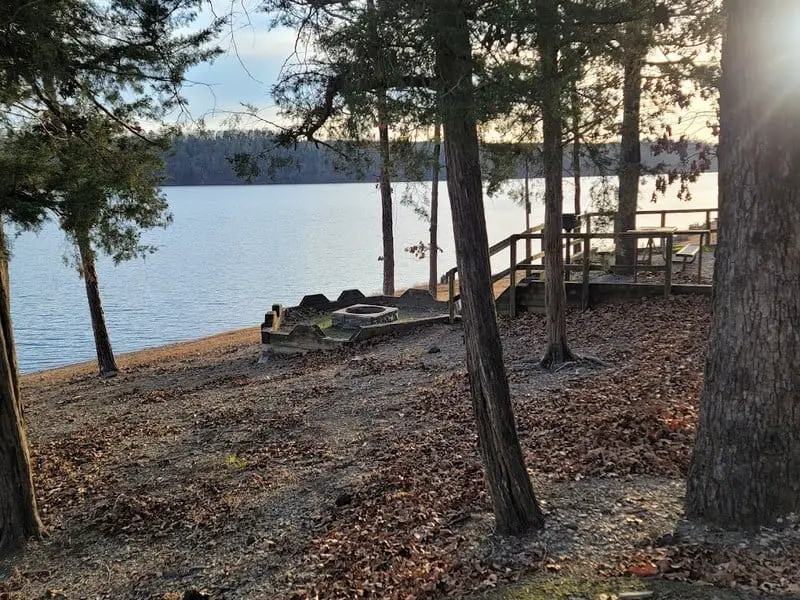
Lena Landing Campground
34.668663, -93.231077
Lena Landing Campground is a small, maintained U.S. Army Corps of Engineers site on the eastern shore of Lake Ouachita, near Hot Springs, Arkansas. It provides lakeside camping options with basic amenities, making it a suitable choice for both tent campers and RV users. The campground is directly accessible via Lena Landing Road, just off Highway 290.
Campsites are spaced moderately apart and typically include gravel pads, picnic tables, fire rings, and nearby vault toilets. While the site is maintained, it does not offer electrical or water hookups, and there is no dump station. It is considered a low-traffic area compared to larger campgrounds nearby, which makes it appealing to campers looking for quiet lakeside camping with fewer visitors.
The adjacent boat ramp provides direct access to Lake Ouachita, making this a popular location for boating and fishing. Visitors commonly target bass, bream, and catfish in the area. Swimming is permitted in the lake, but there is no designated swim area at the campground. Cellular reception is weak to moderate depending on provider. Firewood gathering is allowed within reasonable limits. This site is best for campers seeking peace, lake access, and a minimalist experience close to nature without large crowds.
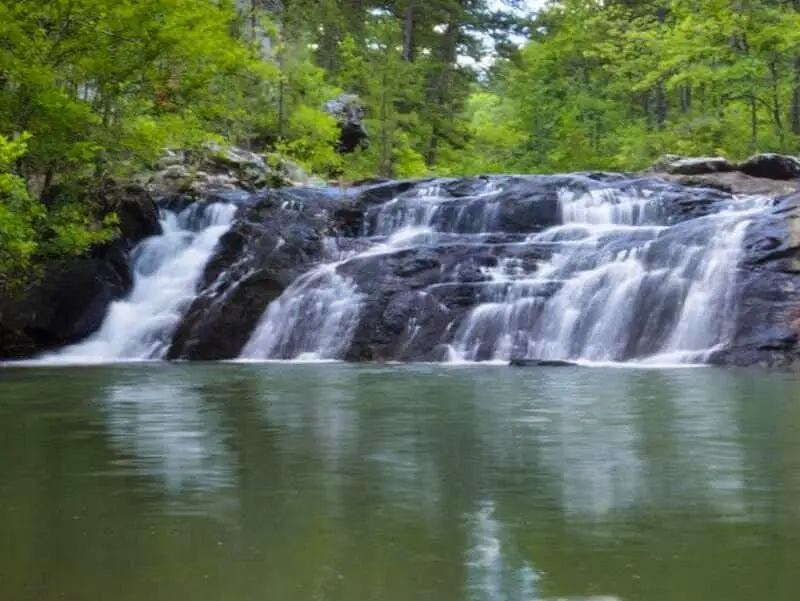
Fourche Campground
34.869682, -93.109276
Fourche Campground is located near the western edge of Lake Winona in the Ouachita National Forest. It is a primitive campground managed by the U.S. Forest Service and accessed via gravel forest service roads. There are no modern amenities or hookups, and all camping here is non-reservable, first-come, first-served.
The campground includes a handful of designated campsites, each with a fire ring and picnic table. Vault toilets are present, but there is no potable water or dump station, so visitors must come prepared. The area is heavily wooded and surrounded by pine and hardwood forest, offering shaded sites in a quiet and isolated setting. It’s suitable for tents and smaller campers, though larger RVs may find maneuvering difficult due to the narrow and sometimes steep access road.
Lake Winona is a non-motorized lake, so visitors primarily engage in kayaking, canoeing, fishing, and shoreline hiking. The lake is used as a drinking water source, and swimming is not permitted. Cell service is very limited to nonexistent, which adds to the off-grid feel. Fourche is best for visitors looking for a peaceful, secluded forest experience with light recreation and limited infrastructure. Leave No Trace ethics are important to maintain the site’s natural condition.

Charlton RA Campground
34.532002, -93.384003
Charlton Recreation Area Campground is a developed U.S. Forest Service site located off Highway 270 between Mount Ida and Hot Springs. It sits along Walnut Creek and includes a spring-fed swimming area, making it one of the more established campgrounds in the Ouachita National Forest.
The campground has paved loops and includes standard sites with picnic tables, fire rings, tent pads, and access to flush toilets and drinking water during the main season. A few walk-in tent sites are also available. Although there are no electrical hookups, the paved sites are suitable for RVs. Reservations are not always required, but they are available for peak times.
The main draw is the large stone-lined swimming hole fed by a natural spring, which remains cool and clear throughout the warmer months. Day-use visitors also frequent the site for picnicking and creek access. The area is heavily shaded, and hiking trails are accessible from the site.
Cell service is limited depending on the carrier. Quiet hours are enforced, and the site is patrolled seasonally. Charlton RA is ideal for family camping, swimmers, and those looking for a maintained site with reliable access and water features in a natural setting.
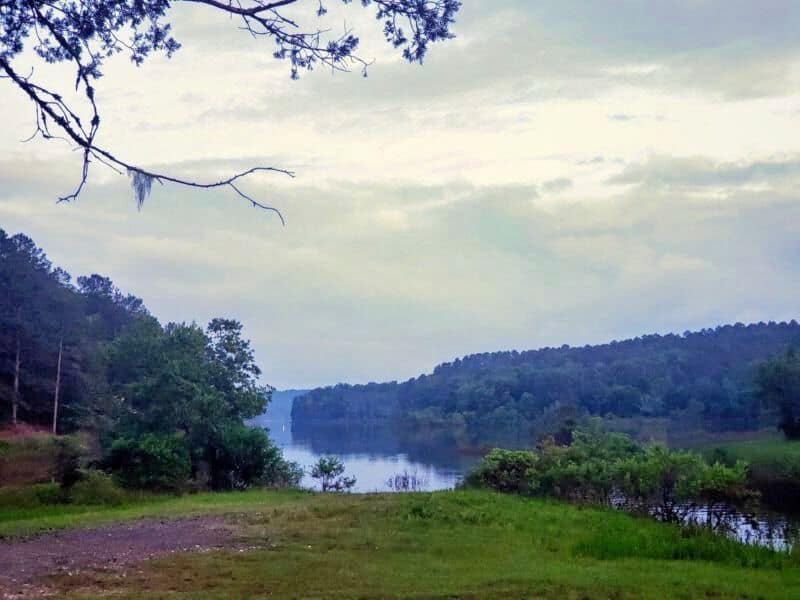
Cedar Fourche Campground
34.662646, -93.283600
Cedar Fourche Campground is a small, primitive camping area located on the southern shore of Lake Ouachita. Managed by the U.S. Army Corps of Engineers, it is a fee-free, non-reservable site that offers basic, undeveloped campsites with direct lake access. It lies just west of the more developed Brady Mountain area.
The campground includes a gravel loop road with several pull-off sites, most of which are shaded by pine and hardwood trees. There are no electrical or water hookups, and no dump station. Vault toilets may be present, though availability and condition can vary. Each site typically includes a picnic table and fire ring.
The area is primarily used for fishing, kayaking, and quiet lakeside camping. A small boat launch is nearby, but not suited for large watercraft. The campground is best suited for tents or small rigs; large RVs are not recommended due to space constraints and uneven terrain.
Because of its remote setting, cell phone coverage is limited. Visitors should be prepared for self-sufficiency—bring water, firewood, and a waste disposal plan. Cedar Fourche is ideal for those looking to camp close to the water without campground crowds or service infrastructure.
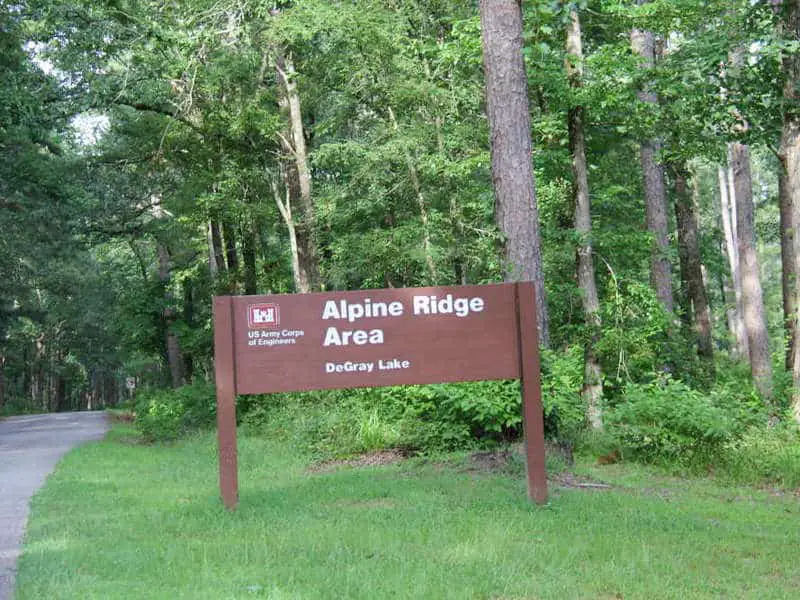
Alpine Ridge Campground
34.259687, -93.235369
Alpine Ridge Campground is a developed camping area located along the southern shore of DeGray Lake near Bismarck, Arkansas. Managed by the U.S. Army Corps of Engineers, it offers a quiet, wooded setting with scenic lake views and access to boating, fishing, and swimming.
The campground features standard sites with picnic tables, fire rings, and gravel or paved pads. Many sites are located close to the shoreline or provide water views. Vault toilets and potable water spigots are available, although there are no electrical hookups or modern restrooms. A small boat ramp serves campers who wish to explore DeGray Lake by canoe, kayak, or small motorboat.
Alpine Ridge is known for being less trafficked than nearby Arlie Moore or Shouse Ford, making it ideal for those who want a more peaceful experience. The area is forested, offering shade and privacy between campsites. Cell coverage may be spotty depending on your provider.
The access road is gravel but generally well-maintained. Visitors should note that trash service may not be provided, so pack out all waste. Alpine Ridge is well-suited for families or solo campers who value lakeside recreation and seclusion without the need for full amenities.
Frequently Asked Questions
Boondocking near hot springs? There’s a lot to know—specific spots, legal stuff, finding free campsites. Permits and restrictions pop up sometimes. The right tools make planning way easier.
What are some top boondocking locations near Hot Springs, Arkansas?
You’ll find dispersed camping on public lands like national forests around Hot Springs. Ouachita National Forest has plenty of free camping near natural springs. Check maps and local rules before you set up.
Is it legal to camp for free in any location in Hot Springs National Park?
Nope, free camping isn’t allowed inside Hot Springs National Park. You’ll need to use designated campgrounds there. For free camping, head to nearby national forests or BLM land.
How can one find free camping areas close to hot springs?
Apps like Gaia GPS and websites for dispersed camping and free campsites are super helpful. They highlight public lands where you can camp for free, including spots near hot springs. Always double-check local rules.
What are the best resources for locating boondocking sites across California?
TAXA Outdoors and community-driven free campsite sites are solid options. California also has BLM land and several national forests with dispersed camping near hot springs. Use official maps and guides for the freshest info.
Can you provide a guide to boondocking spots in natural areas like Ozark–St. Francis National Forests?
In Ozark–St. Francis National Forests, dispersed camping is usually fine unless otherwise posted. Look for spots near streams or springs, but steer clear of private property. Always stick to Leave No Trace principles.
Are there accessible hot springs boondocking sites in Florida?
Honestly, Florida doesn’t have a ton of natural hot springs—at least not like you’d find out west. Still, you’ll stumble across a few spots, especially around the Suwannee River or tucked away in some state forests, where you can camp for free. Public land’s a bit scarce, so it’s smart to check with local folks or rangers about the latest access rules before you roll in.
